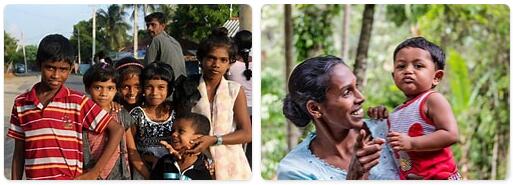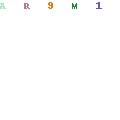Population
Sri Lanka has an average population density of 331 residents per km2, but the country is very unevenly populated; the northern and eastern parts are sparsely populated, while the population density is very high in the southwest, mainly around the capital Colombo.
Following independence, Sri Lanka, like other South Asian countries, has experienced a strong population increase, mainly due to declining death rates as a result of improved public health. About 19 percent of the population lives in cities, of which Colombo (752,900 residents, 2012), Dehiwala-Mount Lavinia (246,000) and Moratuwa (207,800) are the largest.

The politically and culturally dominant majority of the population (just over 74 percent) are Sinhalese. They are descendants of Indo-European peoples who immigrated from northern India around 500 BC. After the Sinhalese kingdom in the 20th century BC adopted Buddhism, the Sinhalese became the leader in theological, cultural and political development of Theravada Buddhism.
A significant minority are the Dravidian Tamils (17 percent), who began immigrating from southern India a few hundred years after the Sinhalese and who numerically dominate the northern part of the country. A later wave of immigration of Tamils took place during the British colonial period, due to the need for labor in the tea and rubber plantations. This immigration history gave rise to the distinction between “Sri Lankan Tamils” (descendants of the early immigrants) and “Indian Tamils” (immigrant labor). The Tamils are predominantly Hindu. 30 percent are Muslims. Tamil Muslims are officially not classified as Tamils, but as Moors, a category that also includes descendants of Muslim Malays, introduced by the Dutch, as well as Arabs who immigrated in the 9th century.
The country’s Muslim population makes up about 10 percent, most of whom are employed in trade. The country’s original population, the Australian woods, which fed on hunting and gathering, has been reduced to an insignificant wasteland or assimilated by the Sinhalese. However, the term is sometimes used for both Sinhalese and Tamil marginalized smaller groups who, in the absence of arable land for wetland cultivation, were forced to rely on burning, hunting and gathering in the jungle in the south-eastern part of the country.
Language
Official languages according to the constitution are Sinhalese and Tamil. English and administration are also used in English, which was the official language of the colonial era. Of the population, three quarters speak Sinhalese and one quarter Tamil. Smaller groups speak Creole languages based on Portuguese and Malay respectively. As a religious language, Pali is mainly used, but also Sanskrit and Arabic.
Religion
According to thesciencetutor, in Sri Lanka there are Buddhism, Hinduism, Islam and Christianity. Religious freedom prevails; Buddhism can, however, be regarded as a state religion. It was introduced according to the tradition of Emperor Ashoka’s son Mahinda in the 20th century BC. Its strongest stronghold was the monastery of Mahavihara in Anuradhapura, where theravada enjoyed royal support at the expense of mahayana. Close contacts have been maintained with, among other things, South India, Burma and Thailand. Buddhism’s position is strong (about 60% of the population in 1994) and is supported by an influential and orthodox Sinhalese monk and layman. Since the 19th century it has, through Anagarika Dharmapala underwent a transformation; one speaks of a neo-Buddhism. A kind of mission is also carried out, e.g. by the Maha Bodhi Society.
Hinduism (about 20%) has probably existed in Sri Lanka as long as Hinduism has existed in South India and is found among the Tamils. Throughout history, Sinhalese and Tamil culture (Indo-Indian and Dravidian culture) have been in conflict with each other. Alongside gods like Shiva and Vishnu are worshiped Ganesha and local gods. Often the temples are adjacent to Buddhist shrines.
Islam came to Sri Lanka with Arab traders. The Muslim population (about 10%) is predominantly Tamil speaking and of Arab descent.
Christianity (about 10%) was introduced in the early 16th century by Portuguese colonizers, followed by Dutch and British. It is represented by the Roman Catholic, the Reformed and the Anglican Church.
